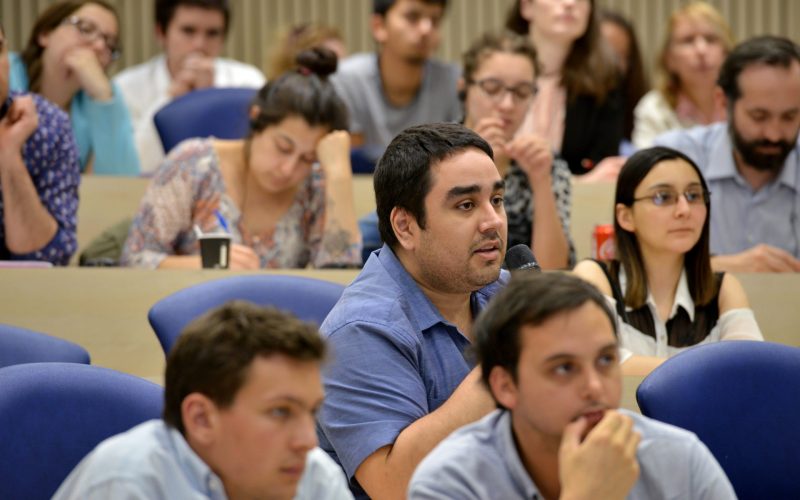
The development and increasing use of new technologies in an increasingly interconnected world is generating large amounts of information and governments.
How to use Big Data to implement more effective social policies?
December 11, 2018
*Gallery: Economist referred to the extensive New Zealand experience in the use of data within the public sector.
The development and increasing use of new technologies in an increasingly interconnected world are generating large amounts of information and governments are beginning to use it to improve their decision making and the quality of public products and services.
In this context, UAI’s GobLab, together with the Directorate of Budgets (Dipres) of the Ministry of Finance and the Embassy of New Zealand, organized a talk where the chief economist of the New Zealand Ministry of Social Development, Tim Maloney, spoke about the experience of the oceanic country in the use of data for social research and the best application of public policies by the government.
Maloney, who is also co-director of the Center for Social Data Analysis (CSDA) of the Auckland University of Technology and a professor at the same institution, began by pointing out that New Zealand was one of the pioneer countries in the use of data for research and administrative purposes. In this way, they created the Integrated Data Infrastructure (IDI), “which is a centralized data warehouse that contains all the administrative information that New Zealand collects from people who interact with the public sector, from birth to death records, and everything that happens between such as health, education, justice, immigration; in short, any data collected about these people is essential for our Statistics Department, who accumulate all these data and link them,” he explained.
However, explained the economist, all data are anonymized for later government and / or academic use. “These data have allowed us to know phenomena that were previously impossible to know as infant mortality or suicides in adolescents. (…) It is a very abundant database that even allows analyzing very small groups within the population, ”said the expert.
Based on this data, the academic revealed, the current New Zealand government has placed special emphasis on reducing child poverty. In this way and thanks to the complete analysis of the information, it is possible to develop a more effective public policy program to counteract child poverty. “The government asks us to identify the impact that these programs are having, in order to know which of these require more resources. The fact that better data can be combined with better estimation techniques deliver the potential to do a much better job in evaluating programs,” Maloney said.
In addition, the economist explained the predictive analytical process that takes place within the Ministry, in which the data stored in the IDI is used to try to predict results and use them as a tool to estimate risks: “Predictive analytics links the data history of the base with the new data that they enter and weights them by assigning them a score, in such a way that it allows predicting a certain situation according to each score. Otherwise, having millions and millions of data, it becomes impossible to assess what is important and what is not.” For example, in New Zealand, a predictive analytical model is used to examine the transition period of people who graduate from university and enter the world of work. This makes it possible to observe who is having a harder time at this transition, and after identifying the risk factors, public policies are applied that contribute to facilitating this process.
Finally, Maloney also referred to the main limitation that today has the application of techniques and the evaluation of data programs: “We have very talented researchers who can do these tasks systematically and carefully, but they are scarce. The big problem we have is that there aren’t enough researchers to do this job.” In this sense, the School of Government, from April 2019, will give for the third time the diploma “Big Data for Public Policies”, dictated by a teaching team with practical experience in the development of these new trends in the United States, Europe and Chile, who will teach methodologies and data analysis tools that allow innovation in the design and management of projects and public policies.














